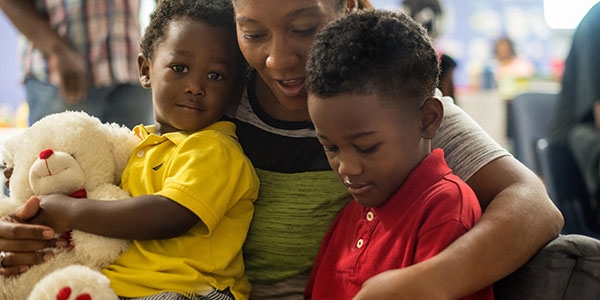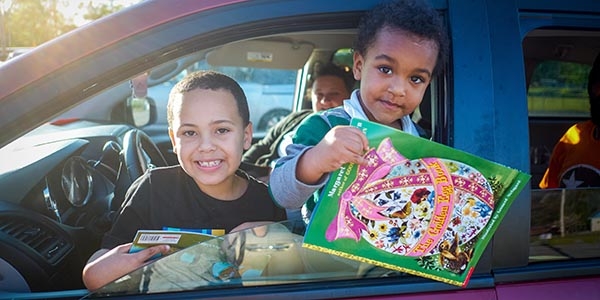
At 12:52 PM Yangon time, a strong earthquake with a magnitude of 7.7 struck central Myanmar, causing significant infrastructure damage across the country.
It is feared to be the strongest earthquake to hit Myanmar in a century. Save the Children is ready to respond.
A strong earthquake struck central Myanmar on March 28, causing significant infrastructure damage across the country. Save the Children is launching an emergency response to ensure children, and their families can get the support they need to mitigate the worst impacts of this disaster. Photo Credit: Community Members / Save the Children
10 Earthquake Safety Tips to Keep Children Safe
Earthquakes are caused by the breaking and shifting of rock beneath the earth’s surface. They can strike without warning and can occur at any time. In the U.S., 45 states and territories are at moderate to very high risk of earthquakes.
Globally, 81% of earthquakes occur along the world's earthquake belt, the circum-Pacific seismic belt, found along the rim of the Pacific Ocean. It has earned the nickname "Ring of Fire" for this reason. Japan and Indonesia are among the world's top most earthquake-prone countries.
On March 28, a 7.7-magnitude earthquake, the strongest earthquake recorded anywhere in the world since the quake that hit Turkiye and Syria in 2023, caused widespread damage and casualties across Myanmar, with many people still unaccounted for across the region.
Save the Children’s emergency experts share 10 earthquake safety tips including what you can do before, during and after an earthquake.
How to prepare for an earthquake:
- Talk to your children about earthquakes.
Explain to your child what could happen, using simple, age-appropriate words. Outline an earthquake emergency plan for the whole family, with an evacuation plan and meeting location and emphasize that their safety is your utmost priority.
- Find safe spots in your home.
Identify and discuss the safest place in an earthquake in your home and tell children to go there immediately if they feel an earthquake. The safest place is an interior room of your house without any windows, such as a bathroom or closet. If possible, take cover under something sturdy, like a heavy table.
- Practice earthquake drills.
Once you’ve created your earthquake evacuation plan and talked with your children about it, it’s time to practice. Practicing earthquake drills will help children understand what to do and how to stay safe during an earthquake.
- Learn your child’s school or daycare disaster plans.
If child’s school or childcare center is in an area at risk from earthquakes, find out how their emergency plan addresses earthquakes. Learn their procedures for evacuation, notifying parents and if there is an alternate pick up location.
- Keep contact information current.
Phone numbers, addresses and relationships change. Keep your children’s school or childcare emergency release information up to date, so that if an earthquake strikes, you’ll know where your child is and who can pick them up.
What to do during an earthquake:
- Drop, Cover, and Hold On.
If you’re inside, drop to the ground and take cover under something sturdy like a desk or table if you feel an earthquake. With one hand hold on to the object and with your other arm protect your head and neck. If you don’t have anything sturdy to take cover under, crouch down next to an interior wall. Stay indoors until the shaking stops and you’re sure it’s safe to exit.
- Find an open spot.
If you’re outside, the safest place in an earthquake is a clear spot away from buildings, trees, streetlights and power lines. Drop to the ground and stay there until the shaking stops.
- If in a vehicle, stop.
Pull over to a clear location, stop and stay there with your seatbelt fastened until the shaking stops.
What to do after an earthquake:
- Involve children in recovery.
After an earthquake, include children in clean-up activities if it is safe to do so. It is comforting to children to watch the household begin to return to normal and to have a job to do.
- Listen to children.
Encourage your child to express feelings of fear, anxiety or anger. Listen carefully, show understanding, and offer reassurance. Tell your child that the situation is not permanent, and provide physical reassurance through time spent together and displays of affection. Contact local organizations, voluntary organizations, or professionals for counseling if extra help is needed.
Additional Earthquake Safety Resources
American Red Cross: Earthquake Preparedness
Earthquake Country Alliance: Welcome to Earthquake Country
Federal Emergency Management Agency (FEMA): Earthquake



